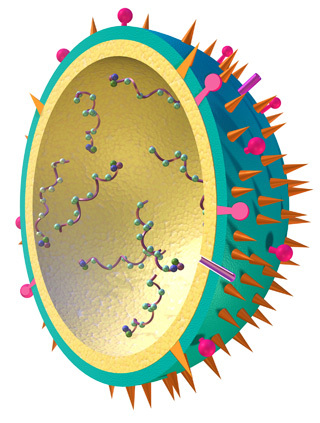
An illustration of a flu virus (Image from National Institute of Allergy and Infectious Diseases (NIAID), and NIH Flickr site).
Instructor(s)
Dr. Sumana Sanyal
Dr. Joseph Ashour
MIT Course Number
7.346
As Taught In
Spring 2013
Level
Undergraduate
Course Description
Course Description
Co-evolution and adaptation between viruses and humans are often portrayed as a zero-sum biological arms race. Viruses enter host cells equipped with an array of mechanisms to evade the host defense responses and replicate. The rapid rate of mutation of viruses permits evolution of various methodologies for infection, which in turn drive development of non-specific but highly effective host mechanisms to restrict infection. This class will discuss the varied solutions each side has developed as a means for survival. We will use examples drawn from human disease-causing pathogens that contribute seriously to the global health burden, including HIV, influenza and dengue virus. Primary research papers will be discussed to help students learn to pose scientific questions and design and conduct experiments to answer the questions and critically interpret data.
This course is one of many Advanced Undergraduate Seminars offered by the Biology Department at MIT. These seminars are tailored for students with an interest in using primary research literature to discuss and learn about current biological research in a highly interactive setting. Many instructors of the Advanced Undergraduate Seminars are postdoctoral scientists with a strong interest in teaching.


